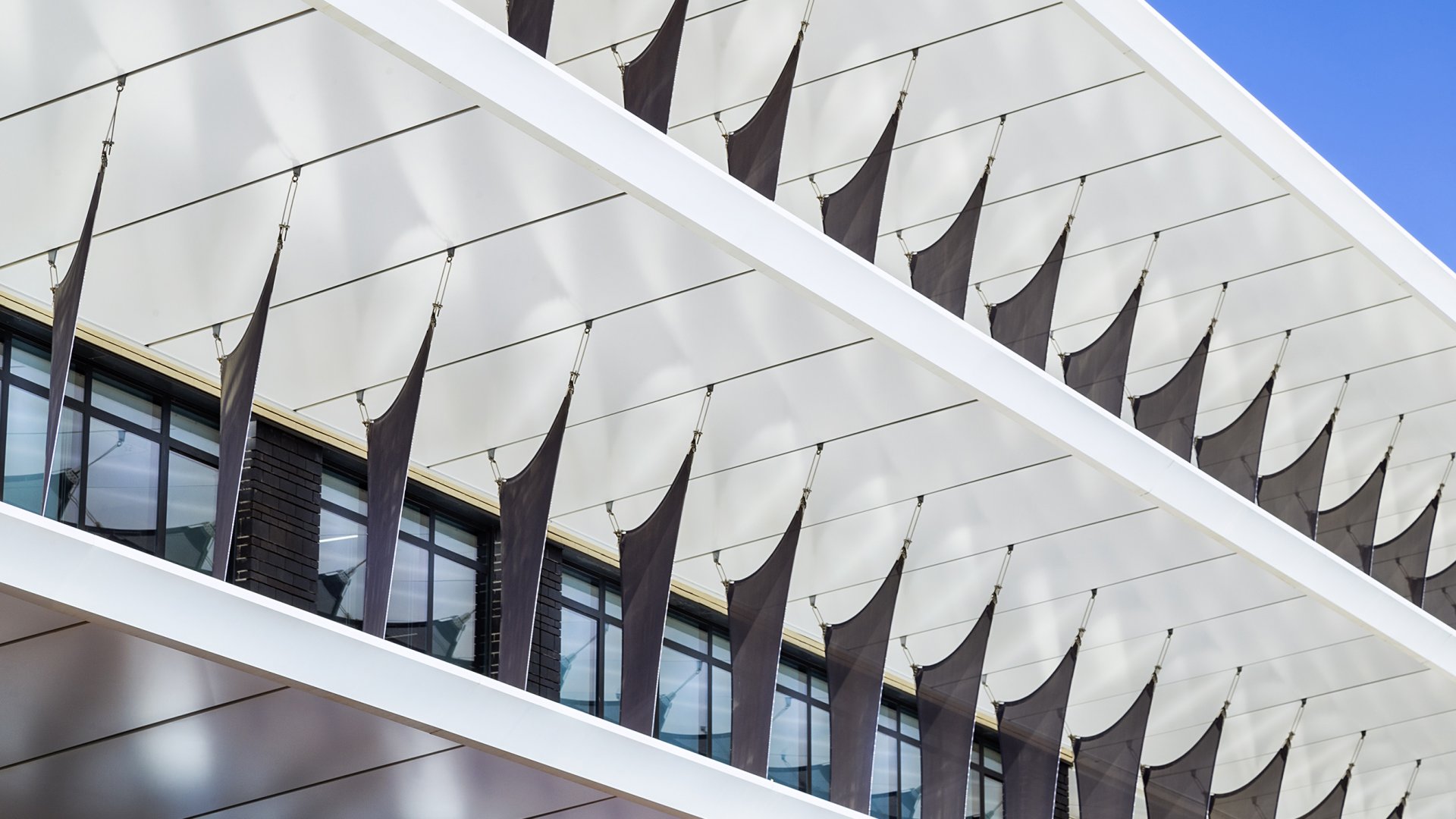
Loyola University Campus, designed by luis vidal + arquitectos, is the world´s first LEED Platinum integrated campus
August 11, 2020
Loyola University Campus, located in Dos Hermanas, Seville, and designed by luis vidal + architects, has managed to be recognized with the LEED Platinum environmental certificate, thanks to its strong commitment to the integral sustainability of the entire complex.
The campus, inaugurated at the end of last year for the 2019-2020 academic year, was designed with the aim of achieving comfortable and pleasant spaces that favor the university community and academic activity, while emphasizing the value of 5G, a 21st century university centre: technological, accessible, sustainable, responsible and that takes the human being as a measure. All these values have been key to designing the world’s first integrated 5G campus that is also energy efficient and stands as an environmental benchmark as the first to achieve such high certification.
This commitment to sustainability has materialized in numerous measures. About materials, more than 20% of the building’s materials come from previous uses, and more than 30% have extraction and production within 800 km away. Thus avoiding or significantly reducing the environmental damage inherent to large movements displacements.
On the other hand, the vegetation of the plot has been restored with native or adapted species in a manner consistent with the local climate, which results in fewer risks for existing local flora, less water consumption and a better survival rate of the implanted species. The landscaped areas occupy 130,250 sqft., where 173 specimens of 14 different species of trees and 41,736 specimens of 63 different species of perennial shrubs and carpets have been planted.
Likewise, in the efficient use of water, the construction of a cistern for the implementation of a partial recovery system for gray water for use in toilets stands out, in addition to the correct management of rainwater on the plot.
Regarding energy efficiency measures, among others, the proper orientation of the building -mainly North and South- and the control of sunlight (candles, overhangs) to prevent excessive heat gains through the facades; the building envelope (roofs, facades, windows) is very careful to minimize excessive energy gains and losses; the colors of the covering materials are reflective, to avoid the accumulation of heat received by radiation; and the installation of photovoltaic panels with a maximum production of 150 KWp, which means a reduction in the net energy consumption of the building.
Altogether, the measures implemented assume that the building consumes around 40% less than a similar building that simply complies with current regulations.
The quality of the indoor environment has also been considered with various measures. Materials with low levels of VOCs (Volatile Organic Compounds) were selected to reduce the environmental footprint of the facilities. In addition, large mats are incorporated into the design of the entrances to the main building to perform a first filtering of harmful substances that may come from outside. This reduces the level of dirt inside buildings. The reprography rooms are also separated from the rest of the areas in each plant where they are present and are equipped with self-closures and specific ventilation, preventing the emissions from the machinery from polluting the interior air.
Lastly, it should be noted that the design of the complex encourages walking, both inside and outside the building. This is achieved with the design of the landscaping, the prominence of the stairs, or the generation of pleasant interior itineraries.